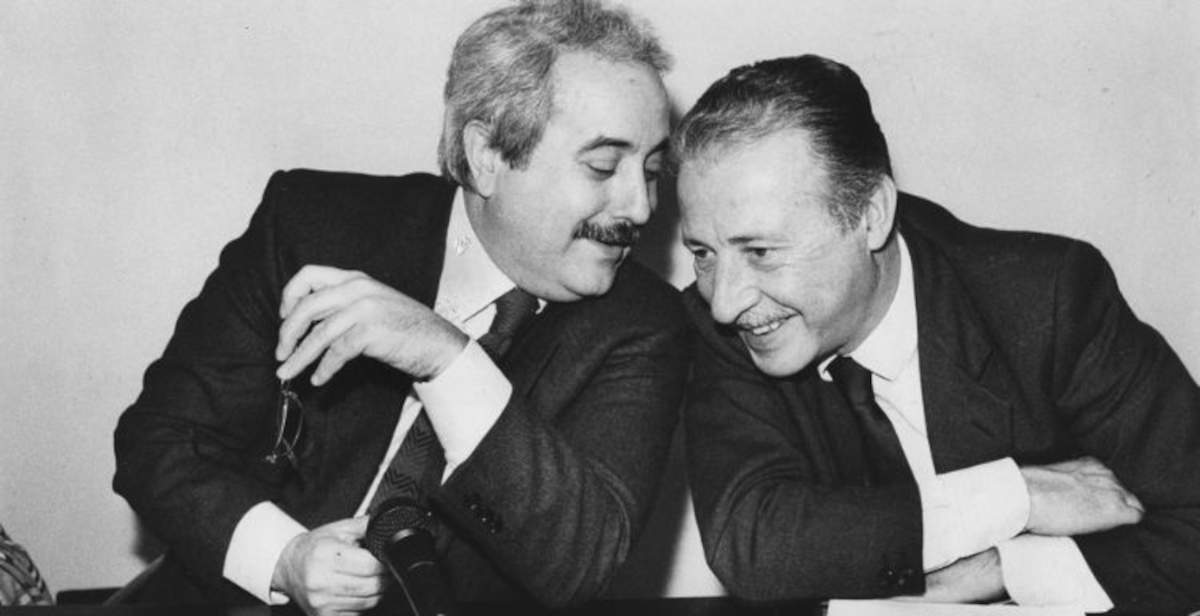It was the spring of 1992 when photographer Tony Gentile, then a young reporter for the daily newspaper Giornale di Sicilia, captured a seemingly minor moment that was, however, destined to imprint itself in the Italian collective imagination. In that shot, Giovanni Falcone (Palermo, 1939 - 1992) whispers something into the ear of Paolo Borsellino (Palermo, 1940 - 1992), as they both smile. The photograph, which became an icon after the Capaci and Via D’Amelio massacres, contains today more than ever the weight of memory and responsibility.
Today, June 18, 2025, the State Examination began for thousands of Italian students, and among the proposed tracks for the analysis of the text is I giovani, la mia speranza, written by Paolo Borsellino and published precisely in 1992 in Epoca, a few weeks before his assassination. A text that, read today, takes on a meaning that transcends its original context and becomes a timely call for the active participation of the new generations in the fight against organized crime. The fact that it was chosen as an examination topic is, in itself, an impactful signal: an invitation to confrontation and thought. The short text published by Epoca has a sober, direct, disarming tone. Borsellino there expresses confidence in the new generations, in their ability to break the culture of omertà and to rebel against Mafia violence not with heroism, but with daily responsibility.

“The young people and the student population are the closest part of the judiciary and the fight against the Mafia: and this is a point of no return...,” he wrote in the text, stressing how important it was to educate civic sense from the earliest years.
What do we know, however, about the Gentile shot that became so famous? The photo was taken on March 27, 1992. On that occasion, Falcone and Borsellino took part in a conference dedicated to the theme Mafia and Politics. Gentile, who arrived at the venue with an analog camera and 36-pose film, managed to capture the instant when Falcone approached Borsellino and whispered something to him that made them smile naturally. The photographer instinctively took three photos, and one of them is the one everyone knows today. Only after the two massacres, on May 23 in Capaci, where Giovanni Falcone lost his life with his wife Francesca Morvillo and three agents of the escort, and on July 19 in Via D’Amelio, where Paolo Borsellino was killed with his five agents, did that shot take on a new value. It became a symbol of a shared friendship and commitment, but also of the isolation of those who, like them, carried on a civil battle without adequate protections and, often, without convinced political support.
Many have questioned the content of that smile. Some have proposed romantic interpretations, others more ironic, and yet, the strength of that photo lies right there: in the silence, in the enigma of a gesture that anyone can interpret, but which carries with it the tension and complicity of a deeply rooted professional and human relationship. For Gentile, the shot has always been thought of as journalistic testimony. It was time that gave it the status of an image-symbol, employed in marches, school settings and awareness campaigns. Over the years, that shot has also inspired numerous murals created in different Italian cities.

The best known is the one painted on the “Gioeni-Trabia” nautical institute in Palermo’s Cala: created in July 2017 by street artists Rosk and Loste, the mural faithfully reproduces the smiling faces of Falcone and Borsellino. The work was intended as a sign of urban redevelopment and active memory, inaugurated in the presence of institutions such as Mayor Leoluca Orlando and Rosy Bindi. On the same subject, a mural was also created in Vietri di Potenza by Attorrep for the festival I muri della legalità, and another in Scampia, as part of the Antimafia Itinerante festival. Finally, in Villabate, Igor Scalisi Palminteri painted Falcone and Borsellino with the words Questa terra sarà bellissima and a lamb, a symbol of sacrifice.

Regardless, the image has not been immune to vandalism. In 2018, the mural in the Cove was daubed with the words “gay” during Pride. In Agrigento, another painting inspired by the photo was vandalized with smoke and piercings drawn on the magistrates’ faces, accompanied by mocking phrases turning them into gangsters. More than 30 years after that spring, the photograph depicting Falcone and Borsellino retains its strength intact, precisely because it shows the relationship, a moment of understanding. In a country where memory often risks crystallizing into ceremony, the photo continues to suggest that justice is a human, imperfect thing, made up of thoughts, hesitations, glances.
 |
| That photo of Falcone and Borsellino: an image that made history |
Warning: the translation into English of the original Italian article was created using automatic tools. We undertake to review all articles, but we do not guarantee the total absence of inaccuracies in the translation due to the program. You can find the original by clicking on the ITA button. If you find any mistake,please contact us.